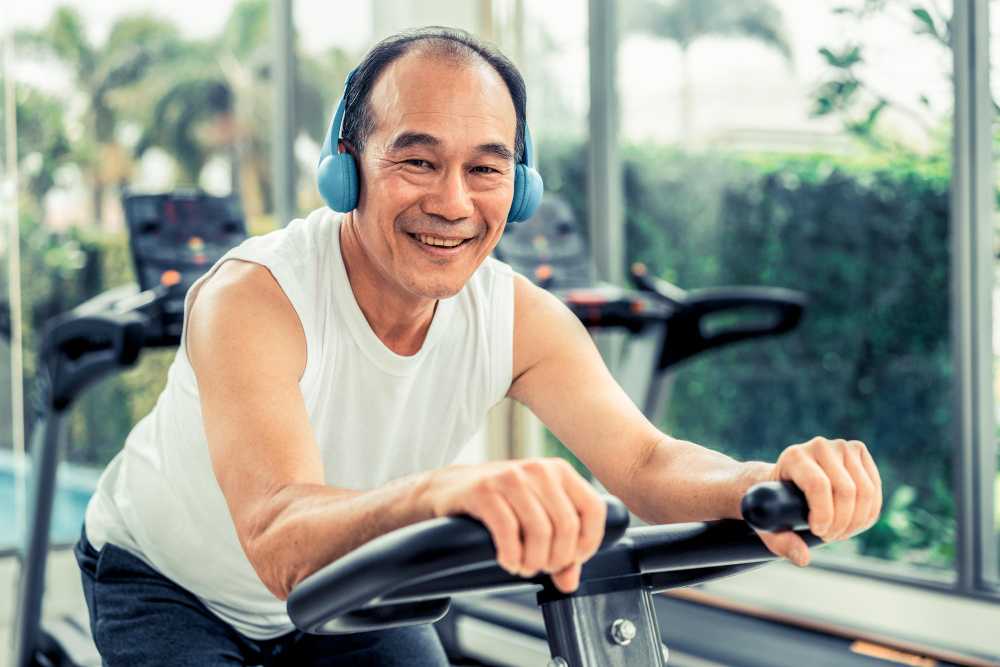For generations, the prescription for healthy aging was often gentle: a daily walk, some tai chi, or a leisurely swim. While these activities are beneficial, a paradigm shift is underway, fueled by decades of scientific research. The new gold standard for longevity and vitality in later years is not just movement, but specifically, strength training. For Singapore’s rapidly aging population, embracing this form of exercise is no longer a fitness trend; it is a critical public health imperative and a personal key to maintaining independence, health, and happiness.
The traditional view of aging often included an acceptance of progressive frailty—the gradual loss of muscle mass (sarcopenia), bone density (osteoporosis), and balance. This decline is not an inevitable fate; it is, in large part, a consequence of disuse. From our 30s onward, we naturally lose muscle mass, a process that accelerates significantly after 60. However, the human body retains a remarkable ability to adapt and grow stronger at any age. Strength training in Singapore is the most powerful tool to combat this decline, effectively turning back the biological clock.
The benefits for seniors extend far beyond the ability to open a stubborn jar. The most profound impact is on functional independence. Strength is the currency of daily life. It is what allows you to rise from a chair unassisted, carry groceries, climb the stairs at a hawker centre, and play with your grandchildren. When these muscles weaken, these simple acts become challenges. Strength training directly targets these functional movements, building a “strength reserve” that makes everyday tasks feel effortless and preserves dignity and autonomy.
Furthermore, it is a cornerstone of fall prevention, a major concern for the elderly in Singapore. Falls can be life-altering, leading to fractures, a loss of confidence, and a fear of movement that creates a vicious cycle of further decline. Strength training does not just build muscle; it fortifies bones by stimulating bone-forming cells, directly reducing the risk of osteoporosis. More critically, it enhances balance and stability by strengthening the often-neglected muscles around the ankles, knees, and hips, as well as the core. A stronger body is a more stable body, one that can recover from a stumble that might otherwise lead to a fall.
The systemic health benefits are equally impressive. Strength training improves cardiovascular health by helping to manage blood pressure and cholesterol levels. It is a potent tool for regulating blood sugar, making it crucial for preventing and managing Type 2 Diabetes. Perhaps most surprisingly, it is a powerful boost for cognitive health. The focus and coordination required for complex movements stimulate the brain, promoting neuroplasticity and potentially reducing the risk of dementia. The mental health benefits—reduced symptoms of depression and anxiety, and a boosted sense of self-efficacy—are just as valuable as the physical gains.
For seniors in Singapore, the journey into strength training must be guided, safe, and progressive. This is where specialized centres and programmes, such as those offered by The Senior Strength Centre, are invaluable. Unlike a commercial gym, these environments are designed specifically for the older adult. They are equipped with user-friendly machines that support safe movement, and the atmosphere is one of encouragement, not intimidation.
The trainers at such facilities are not just fitness instructors; they are specialists in exercise gerontology. They understand the common comorbidities of aging, such as arthritis, hypertension, and previous joint replacements. They conduct thorough initial assessments and design personalized programmes that start at the appropriate level, whether that means using resistance bands, bodyweight exercises, or light weight machines. They prioritize proper form above all else, ensuring that exercise is a therapeutic, not a traumatic, experience. This expert guidance transforms strength training from a daunting prospect into an accessible and empowering activity.
In a nation where “kiasuism” is part of the cultural fabric, adopting a proactive approach to health in our later years is the ultimate expression of being “afraid to lose”—losing our independence, our health, and our quality of life. Strength training is the most effective strategy to secure these treasures. It is the true fountain of youth, not because it makes you look younger, but because it empowers you to live fully, regardless of your age.
Frequently Asked Questions (FAQs)
1. I’m in my 70s and have never exercised. Isn’t it too late to start?
It is absolutely not too late. The human body retains its ability to adapt and get stronger well into our 90s. In fact, the greatest relative gains in strength and functional improvement are often seen in the most deconditioned individuals. The key is to start slowly, under professional guidance, and focus on consistency over intensity. Your first goal is not to lift heavy weights, but to learn the movements safely and build a habit.
2. Is strength training safe for someone with arthritis/knee pain/high blood pressure?
In most cases, yes, and it can be highly beneficial. For arthritis, strengthening the muscles around the joint acts like a natural brace, providing stability and reducing pain. For hypertension, strength training can help lower resting blood pressure over time. However, it is crucial to consult with your doctor first and then work with a qualified trainer who can design a programme that accommodates your specific condition, avoids aggravating movements, and monitors your response.
3. What kind of exercises will I be doing?
A good senior strength programme focuses on functional, compound movements that mimic daily life. This includes:
-
Sit-to-Stand (Squats): For getting in and out of chairs.
-
Hip Hinges: For safe lifting.
-
Push and Pull Movements: For carrying objects and opening doors.
-
Balance Drills: Such as single-leg stands.
These are often performed with resistance bands, light dumbbells, or guided weight machines to ensure control and safety.
4. How often should I train to see benefits?
Aim for 2-3 sessions per week on non-consecutive days to allow for adequate recovery. Significant improvements in strength, balance, and energy levels can often be felt within 4-6 weeks of consistent training. The focus is on gradual, lifelong progression, not rapid, unsustainable results.
5. What should I look for in a senior-specific strength training programme in Singapore?
Look for three key elements:
-
Qualified Instructors: Seek out trainers with certifications in senior fitness or exercise gerontology.
-
Personalized Assessment: A reputable centre will always conduct a health and movement screening before designing your programme.
-
A Supportive Environment: The atmosphere should be welcoming and patient, not competitive. Look for a community of peers where you feel comfortable and encouraged.







Leave a Reply